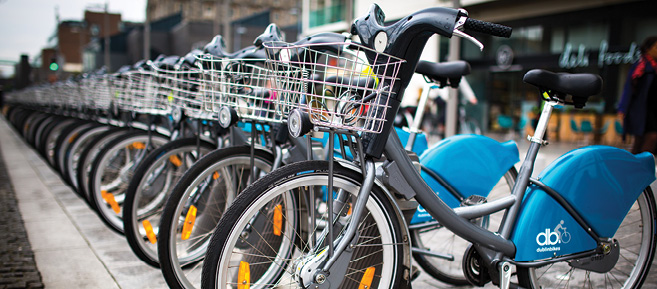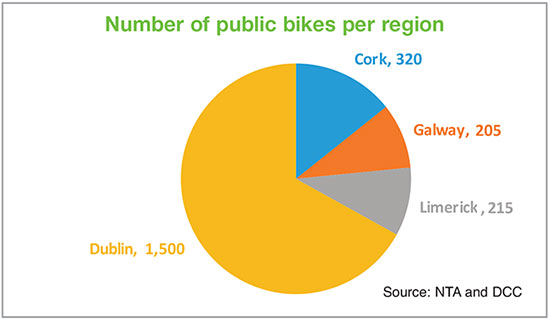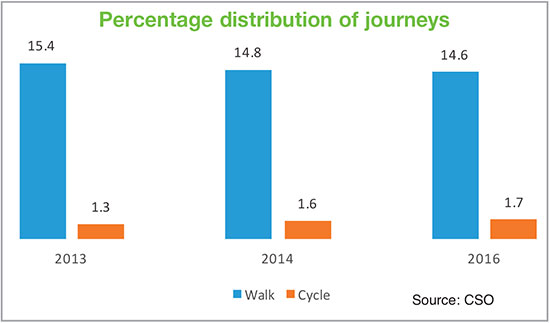Sustainable transport trends


Figures from the Transport Trends 2016 report carried out by the Department of Transport, Tourism and Sport highlight that significant investment in Dublin’s sustainable transport methods have brought about positive results but the same influence is not being had outside of the capital.
Sustainable transport in the form of cycling and walking has been identified as a major focus in helping Ireland reach its targets in relation to climate change and energy. The greatest impact of public initiatives has been felt in Dublin and the positive impact of investment has been recognised in last year’s announcement of funding for greenway projects outside of the capital in Kildare, Meath, Longford and Westmeath. The Department is developing a greenway strategy with the aim of informing the review of the Capital Plan taking place this year.
The success of the Dublin Bike scheme, first launched in 2009 and then further extended, prompted the creation of similar schemes in Cork, Limerick and Galway. Between 2010 and 2015, Dublin Bikes journeys rose from 1.2 million to 4.1 million. Journeys in Cork (289,426), Limerick (40,118) and Galway (19,934) were measured in 2015 and were made as a result of 901kms of cycleway delivered by the Department since 2009.


The latest available census data highlights a dramatic decline in the number of cycle journeys from the highest recorded figure of 1986. However, it is recognised that the decline has correlated with road infrastructure improvement and wider transport accessibility. The declining trend has reversed since 2002 and key indicators of improvements include rising trips to primary schools (+29 per cent) and college (+12 per cent) but secondary school trips have reduced by 41 per cent.
Improving these levels has been the focus of the new national cycle training standard in January of this year, Cycle Right.
Measuring between 2012-2014, the Transport Trends 2016 highlights an increase in walking and cycling over the period as a mode of transport, the distance travelled by the mode and the duration for which people are using the mode.
The report concludes: “Sustainable transport has seen some positive progress over recent years with an increase in cycling numbers for those commuting to work and college and in general for trips in Dublin. Challenges remain in relation to reversing the decline in those cycling to secondary school and ensuring that investment and programmes deliver behavioural change.”





